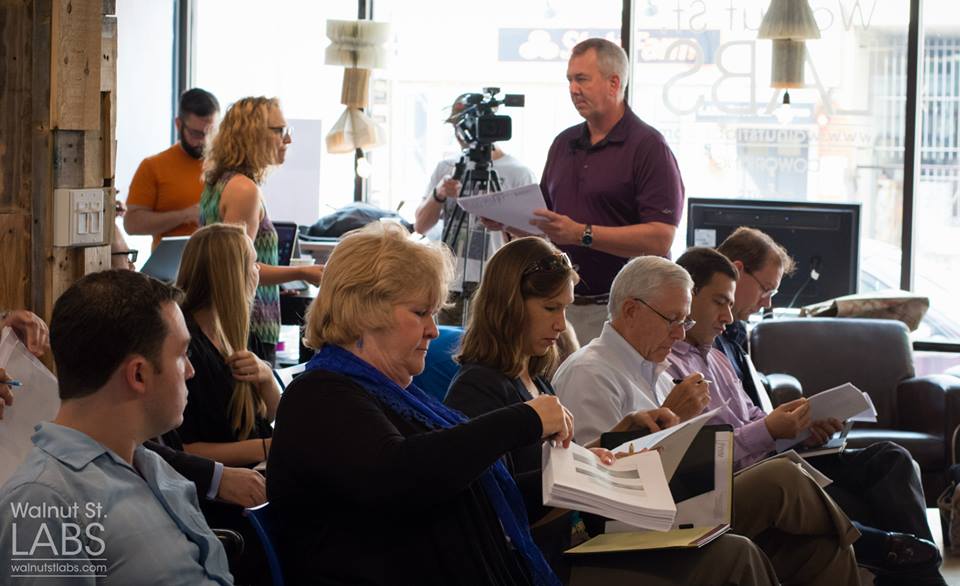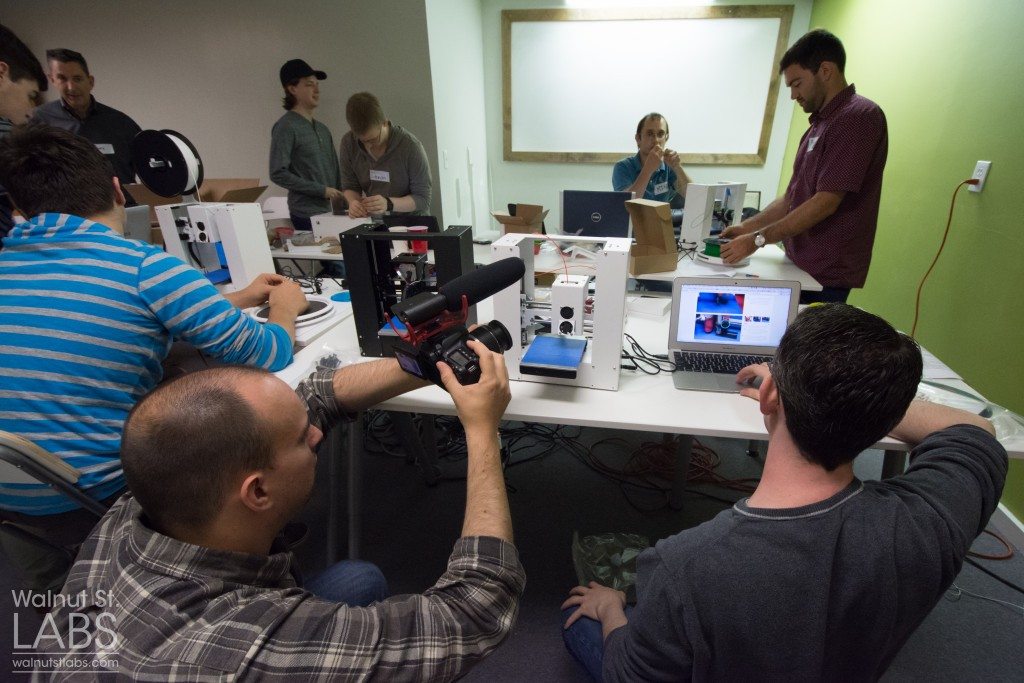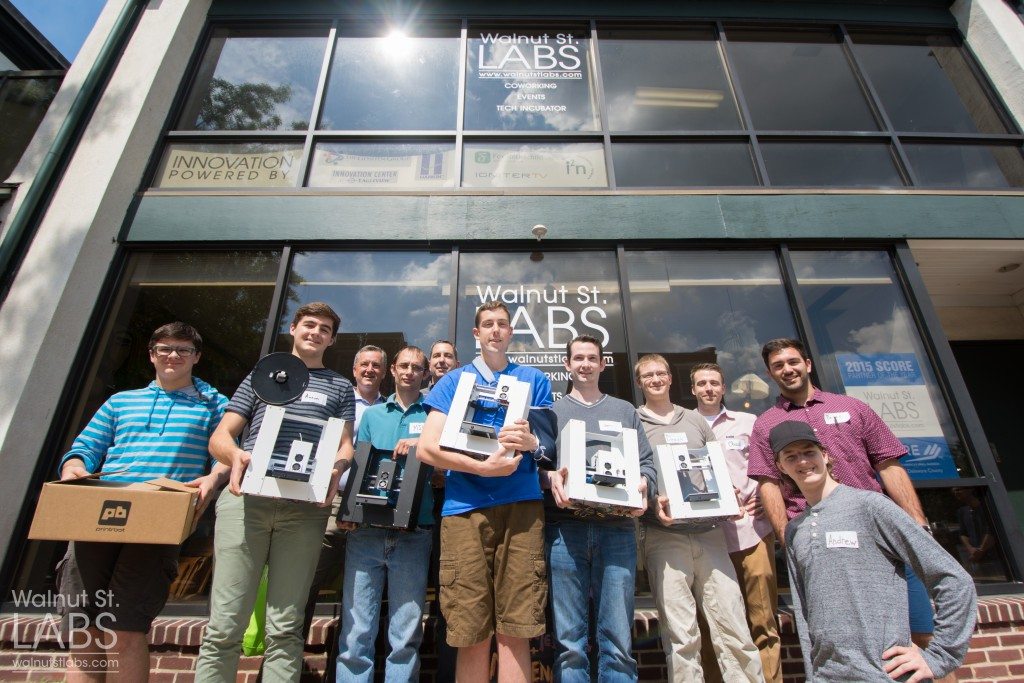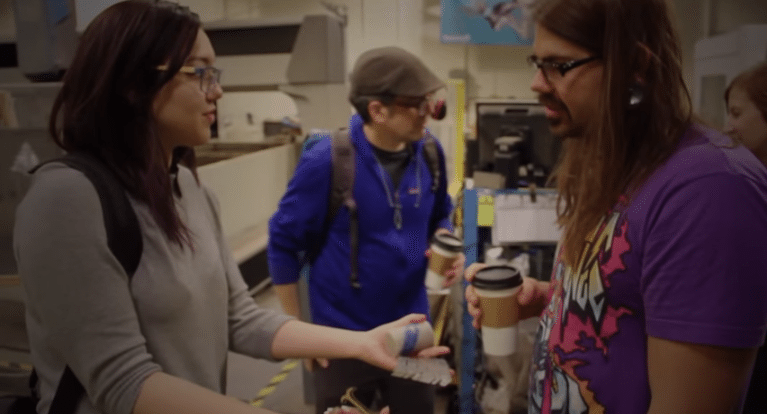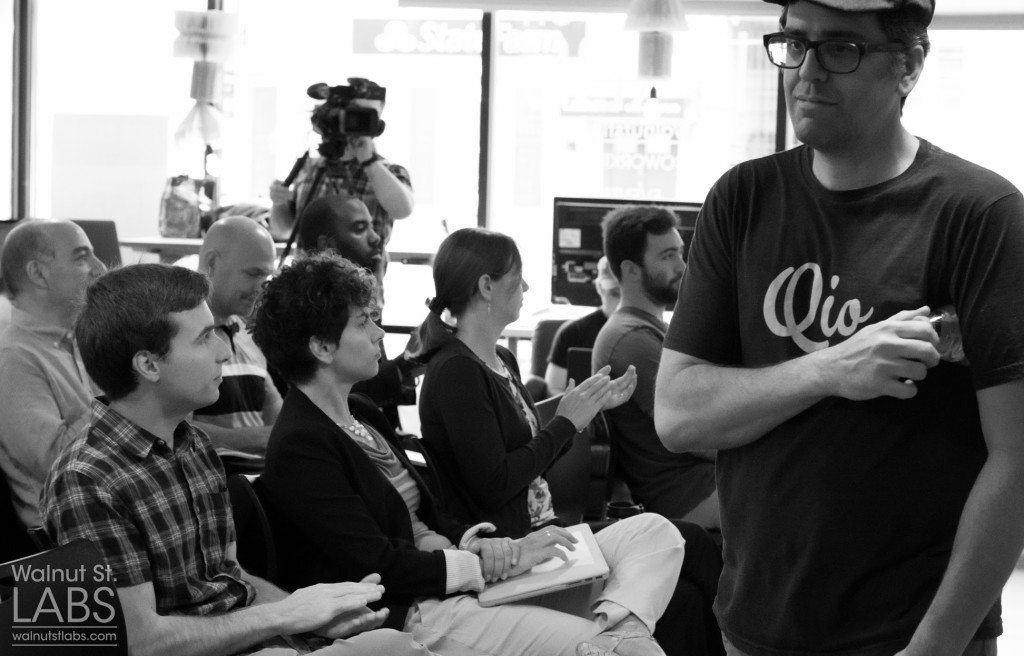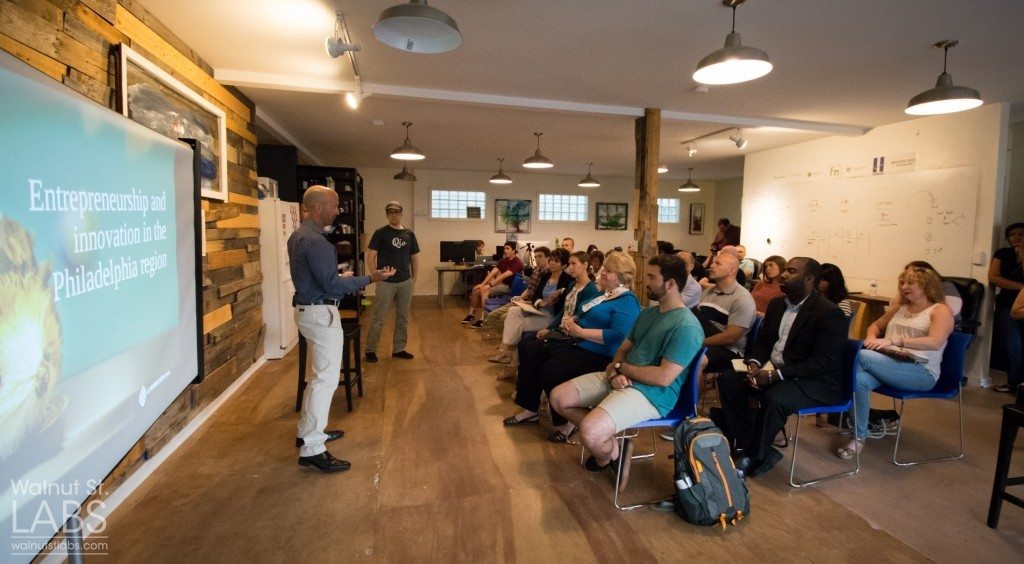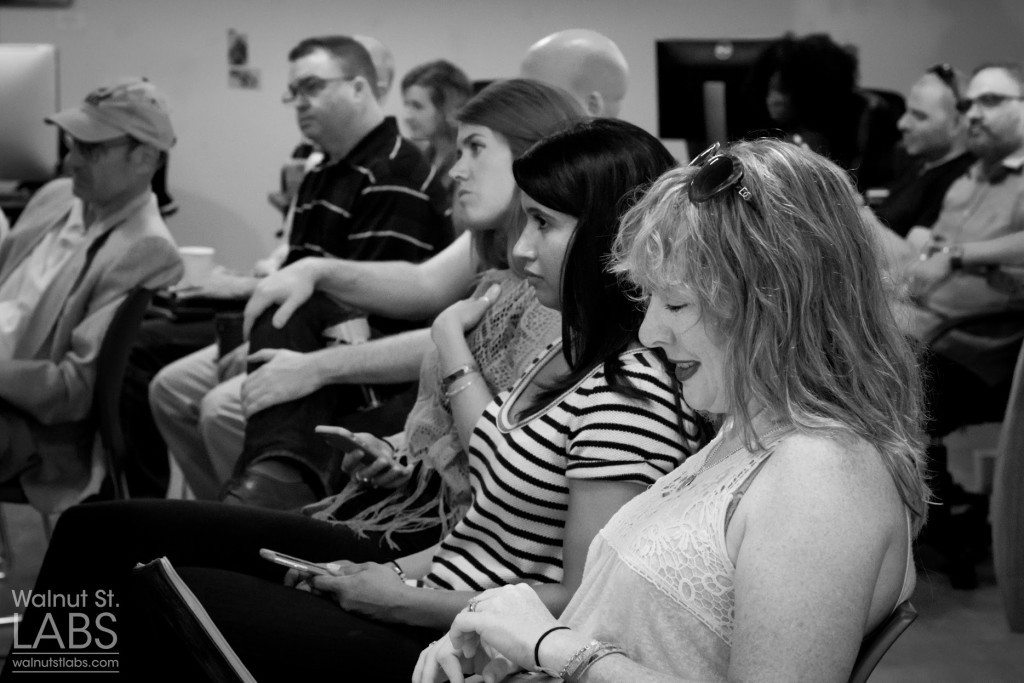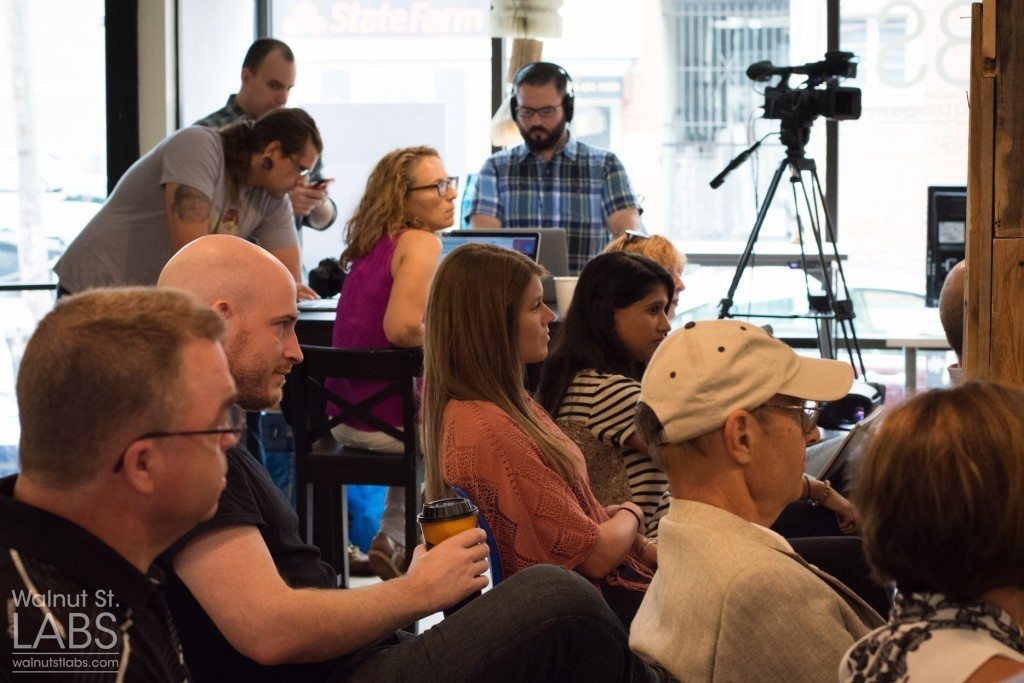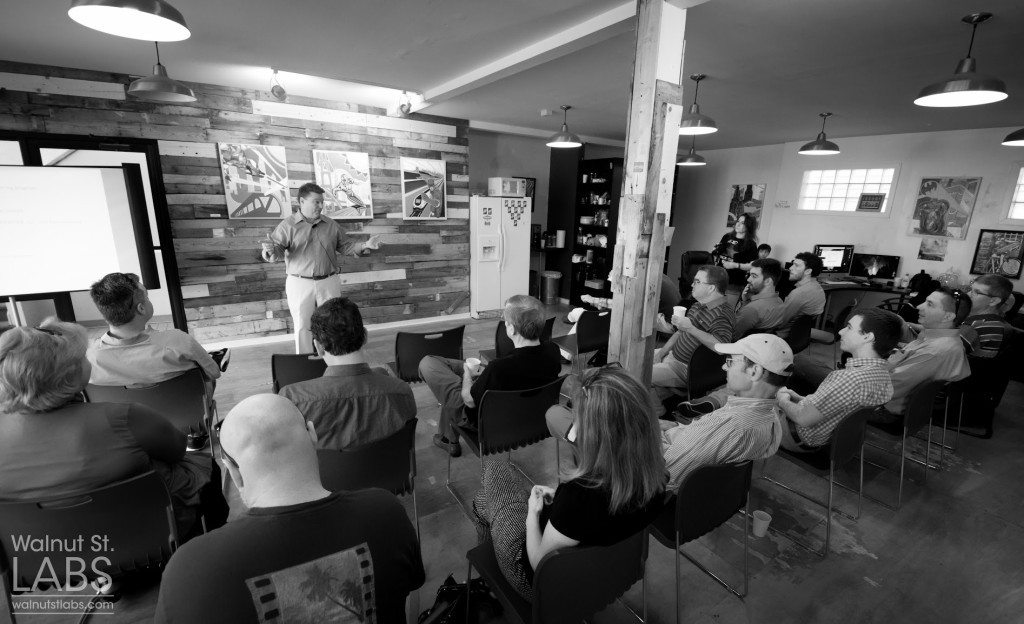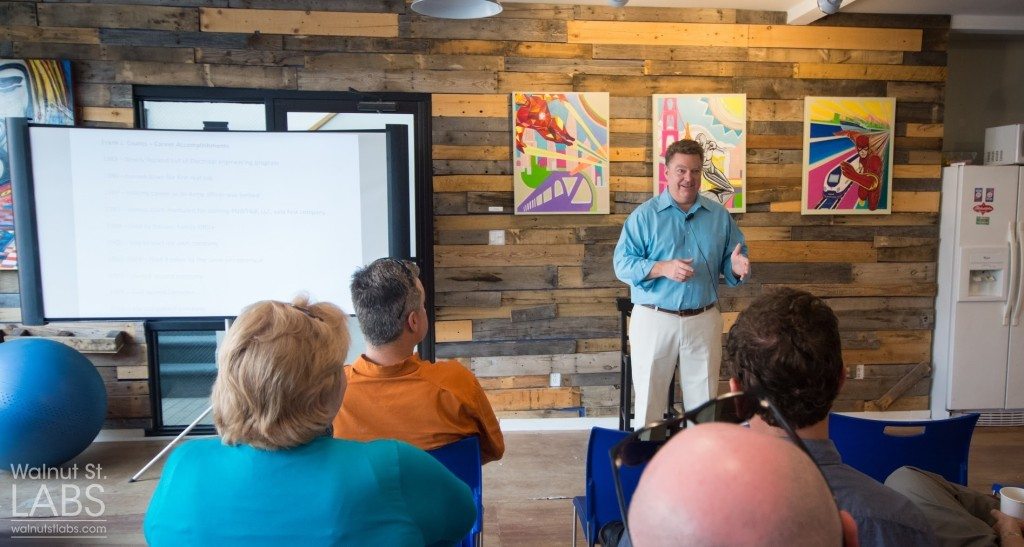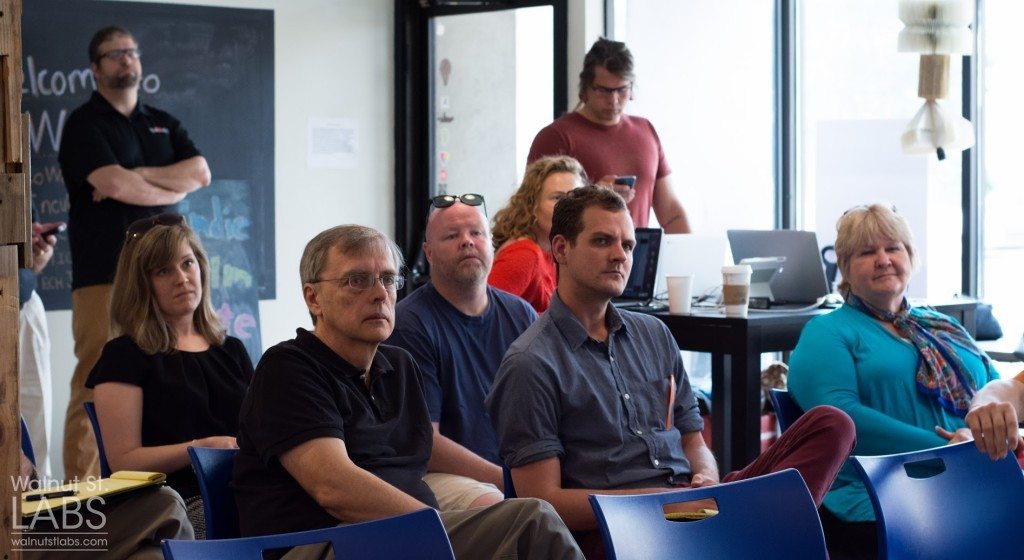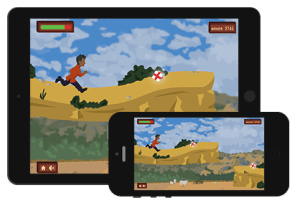Recruitment, Charlie Rose in a Hoodie, and then a Funny Thing Happened on the Way to the Video Shoot
First came Walnut St. Labs—a clubhouse for the nerdy and artistic. Then we started doing events to highlight innovators. Then we started doing videos of the events. Then more people came to the events. And so we did more videos.
Then we started getting questions: do you know someone who can _________? And, hey, we need a _____________—let me know if you know anyone.
So we built TechJobs—a job board.
Job boards are pretty boring and definitely not innovative. So we thought we’d do videos by visiting businesses who posted jobs on our board. We’re true believers when it comes to video marketing—as long as it’s sans-slick. That is, it’s got to be real. Authentic. Unfiltered.
We like realism. We don’t like scripting stuff out. We like “to see what happens”.
So the folks at Coldlight agreed to give video content marketing a try. On the way there, we came up with TechTours. “Like Charlie Rose in a hoodie,” I said. Or VH1 Behind the Music, but with hackers and technologists.
That was an awesomely fun time. Check it out yourself:
After watching it a bunch of times we thought: “Damn, this is way better than a job board!! EVERY company looking to fill a position should do a video like this.”
Does your company have a video like this?
Are you willing to open the doors to your organization and let your team talk to the world about why they love working there?
Holy #$@! That’s scary! It takes courage!!
Actually, it doesn’t.
It takes confidence in your people, in your culture. It takes the belief that transparency trumps everything else. Be who you are—people (and prospective employees) will like you and your company much more.
And the relationship will probably endure longer.
So here’s our bet—and why we started a job board that’s really just a trojan horse (we’re on our way to your office with our camera crew!): “Charlie Rose in a hoodie” is on a mission to remake recruiting from the ground up.
If you get the cameras rolling, you just might be surprised by how many employees volunteer to do a testimonial. And that’s the exact moment when all the magic starts to happen.
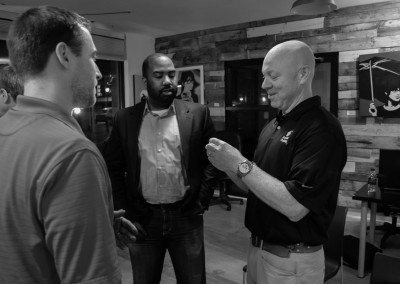
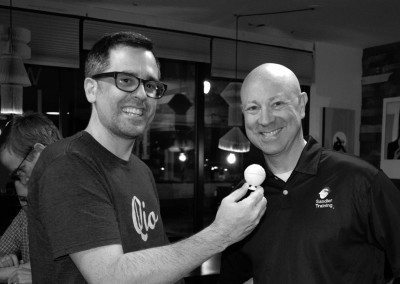
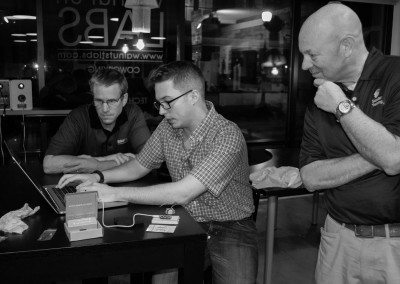

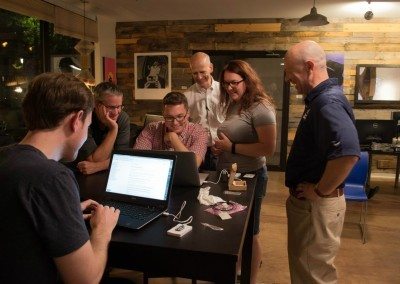
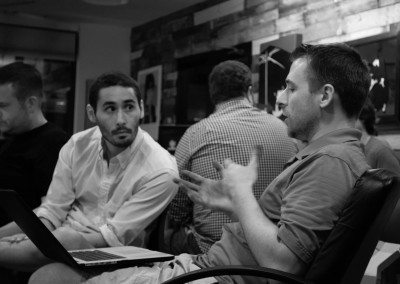

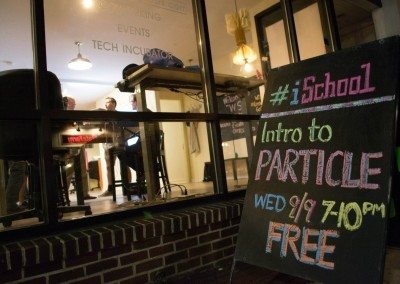
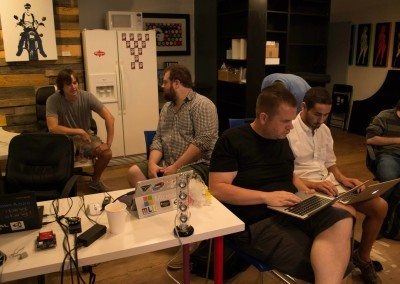


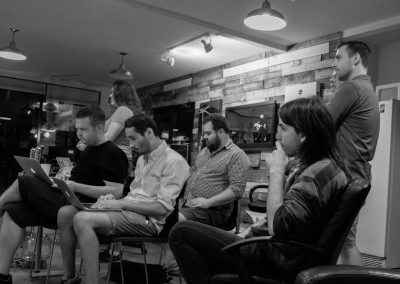
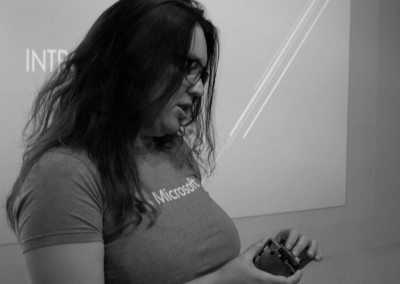
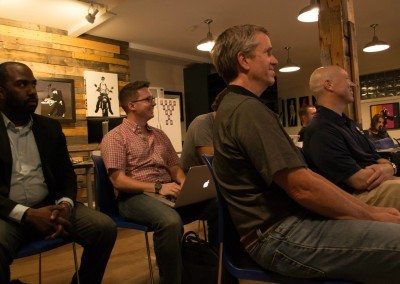
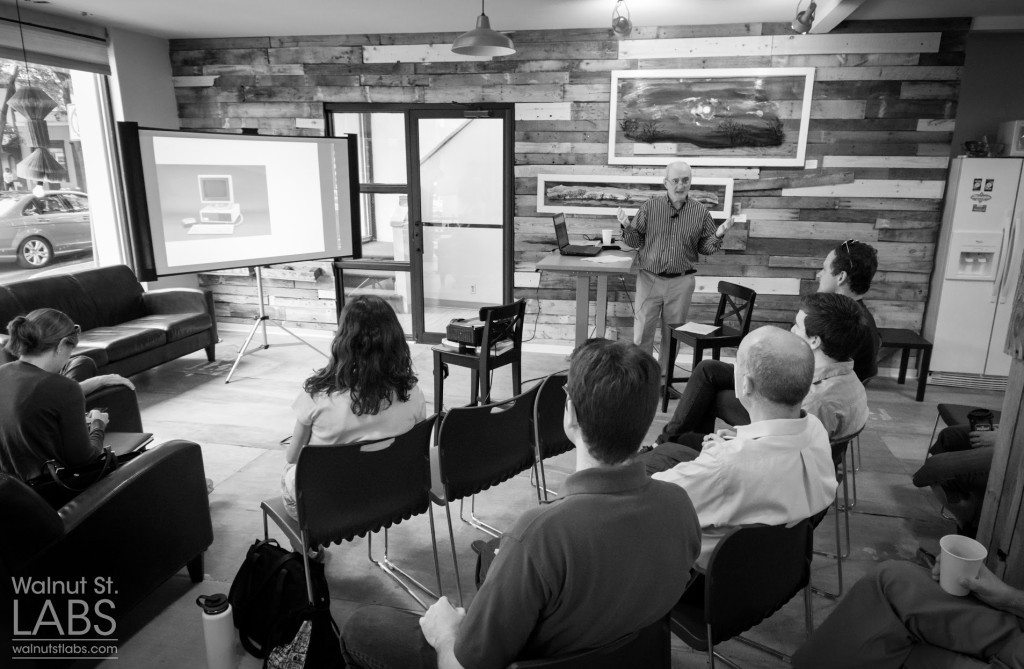 Multimedia Robert’s first big invention was a linear video program called V_GRAPH that allowed for video sharing between computers. It was the early 1980s, and “People were used to computers connecting to each other using text, not video,” says Robert. He took the prototype to a friend, setting up the TV monitor that displayed video housed on a computer, and stood back so his friend could see it. “He didn’t get it. He was convinced there was a VCR attached to the TV. He couldn’t comprehend what he was seeing.” Robert then showed it to an investor, telling him, “You’re going to have multimedia on every desktop in 5 years. He told me I was crazy. But that was the same person who turned down Steve Jobs so I don’t feel so bad.” Robert and his partner struck a deal for V_GRAPH to be bundled as a part of a software package for creatives from a company called Tempra Media. But through a series of missteps, Robert lost out on the financial windfall from his invention when the company became the subject of several patent disputes in the late 1990s.
Multimedia Robert’s first big invention was a linear video program called V_GRAPH that allowed for video sharing between computers. It was the early 1980s, and “People were used to computers connecting to each other using text, not video,” says Robert. He took the prototype to a friend, setting up the TV monitor that displayed video housed on a computer, and stood back so his friend could see it. “He didn’t get it. He was convinced there was a VCR attached to the TV. He couldn’t comprehend what he was seeing.” Robert then showed it to an investor, telling him, “You’re going to have multimedia on every desktop in 5 years. He told me I was crazy. But that was the same person who turned down Steve Jobs so I don’t feel so bad.” Robert and his partner struck a deal for V_GRAPH to be bundled as a part of a software package for creatives from a company called Tempra Media. But through a series of missteps, Robert lost out on the financial windfall from his invention when the company became the subject of several patent disputes in the late 1990s. 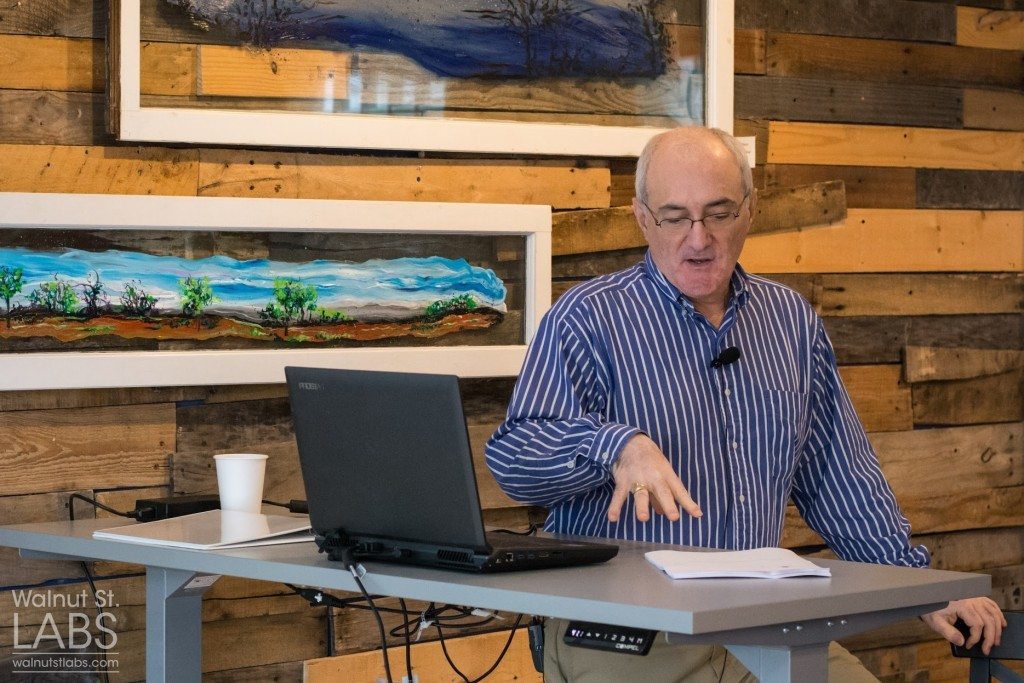 The Web His next project was an object-oriented platform called Ozone. “It allowed multimedia components to be displayed in one view. It could run over the web.” Most significantly, the package included a web browser. Robert and his partner took it to Microsoft. “It was responsible for them getting the AOL contract instead of Netscape.” But Robert and his partner, on their shoestring development budget, hadn’t navigated the patent and copyright implications. Once again, they lost out on the big time to a company with far greater resources. A similar fate befell an early calendar product they designed.
The Web His next project was an object-oriented platform called Ozone. “It allowed multimedia components to be displayed in one view. It could run over the web.” Most significantly, the package included a web browser. Robert and his partner took it to Microsoft. “It was responsible for them getting the AOL contract instead of Netscape.” But Robert and his partner, on their shoestring development budget, hadn’t navigated the patent and copyright implications. Once again, they lost out on the big time to a company with far greater resources. A similar fate befell an early calendar product they designed. 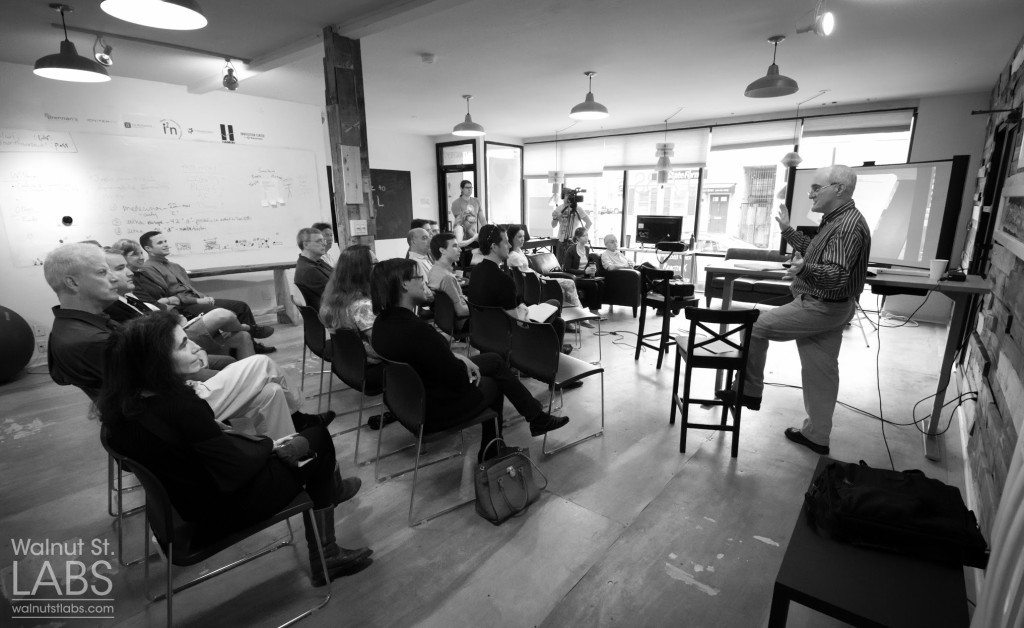 On Doing Other Things Frustrated, Robert changed gears and wrote a book (working title: Inside the Revolution: The Story of Robert Morris). It’s about Robert’s namesake, who in addition to signing the Declaration of Independence, the Articles of Confederation, and the United States Constitution, also served as Superintendent of Finance from 1781 to 1784.
On Doing Other Things Frustrated, Robert changed gears and wrote a book (working title: Inside the Revolution: The Story of Robert Morris). It’s about Robert’s namesake, who in addition to signing the Declaration of Independence, the Articles of Confederation, and the United States Constitution, also served as Superintendent of Finance from 1781 to 1784. 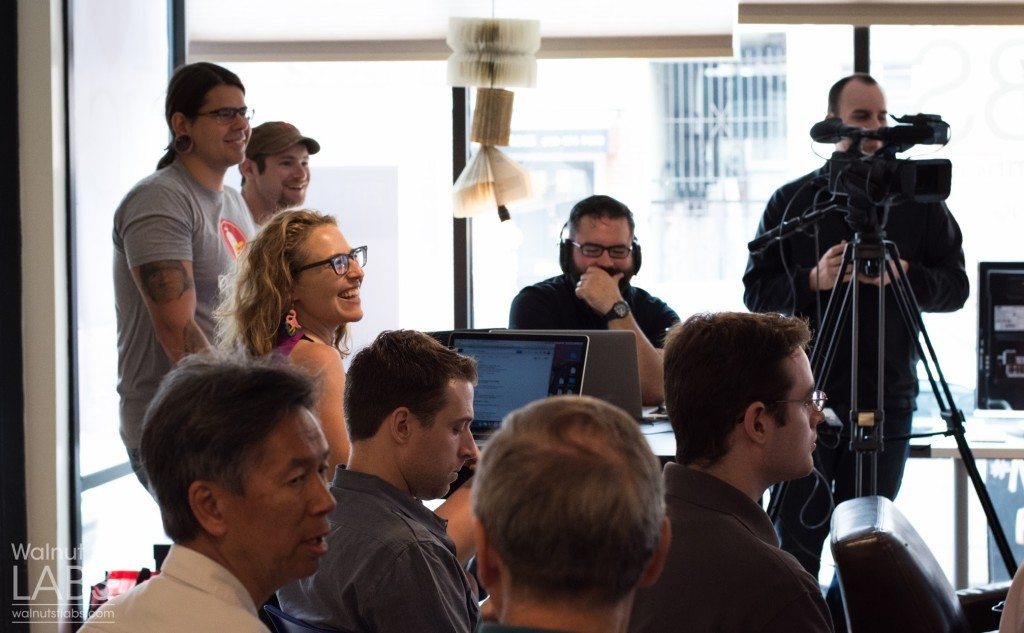 On the Future, and “Working for the Man” Robert considers himself unsuited to be an employee. “I have to put my heart and soul into things. I’m too weird to get a job. I’m just a basic guy who comes up with something he thinks is a good idea.” His next big idea? Robots. “Not a creepy plastic person or a squeezy cat, though. It will be simple and useful like everything else I’ve made.” Stay tuned.
On the Future, and “Working for the Man” Robert considers himself unsuited to be an employee. “I have to put my heart and soul into things. I’m too weird to get a job. I’m just a basic guy who comes up with something he thinks is a good idea.” His next big idea? Robots. “Not a creepy plastic person or a squeezy cat, though. It will be simple and useful like everything else I’ve made.” Stay tuned. As their website states, “for over 30 years, Ben Franklin Technology Partners has been the leading seed stage capital provider for the region’s technology sectors, investing over $175 million in more than 1,750 regional technology companies, many of which have gone on to become industry leaders.” A partnership with Ben Franklin can make a huge difference for a new or established business.
As their website states, “for over 30 years, Ben Franklin Technology Partners has been the leading seed stage capital provider for the region’s technology sectors, investing over $175 million in more than 1,750 regional technology companies, many of which have gone on to become industry leaders.” A partnership with Ben Franklin can make a huge difference for a new or established business. 